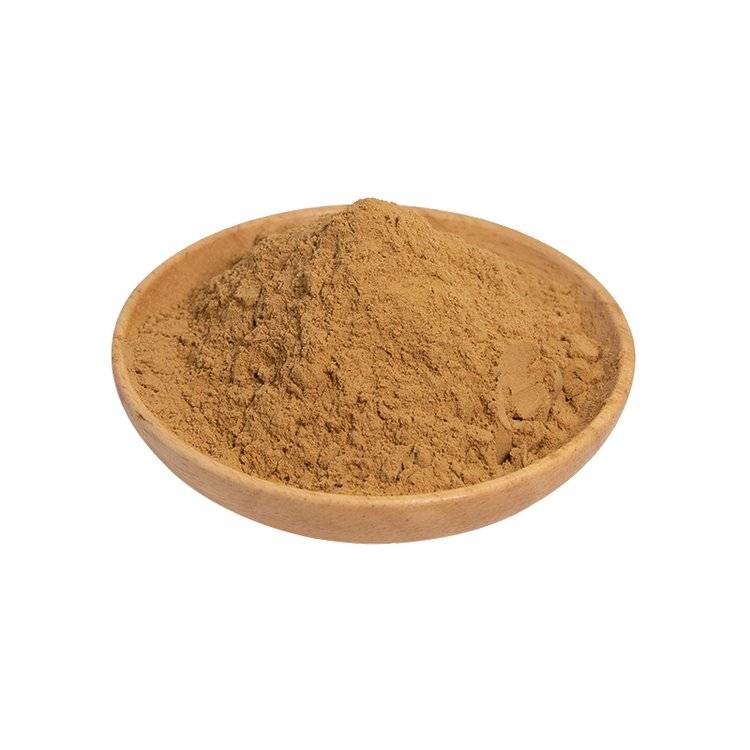タンポポ飲料の研究
タンポポ is a perennial herb in the Asteraceae family. According to the Pharmacopoeia of the People&#中国(2020年版)の39の共和国は、タンポポはtaraxacum mongolicum手に分かれている属taraxacum、植物である。mazz, taraxacum mongolicum,および同属の複数の植物[1]。タンポポの植物は自然の中で苦い、甘くて冷たいです;それは肝臓と胃の経絡に入り、熱と毒素を取り除き、腫れを減らし、しこりを分散させ、肝臓をクリアし、視力を改善し、利尿を促進してstranguryを治療します。それは、沸騰、カーバンクル、胸の膿瘍、内部膿瘍、痛みを伴う排尿、湿らせ熱黄疸を治療するために使用されます。根を含む植物全体が医学的に使用されます[2]。
Dandelion is a common plant with a wide distribution worldwide. There are more than 2,000 species of dandelion worldwide, and 75 species have been identified in China. Dandelion contains a variety of chemically active substances. Scholars at home and abroad have successively extracted more than 10 sterol compounds, more than 10 triterpenoid compounds, more than 10 sesquiterpenoid compounds, 26 phenolic acid compounds [3], 20 flavonoids [4], as well as various polysaccharides, coumarins and various fatty acids from dandelion. Polysaccharides are one of the important active substances in dandelion.
タンポポエキス粉多糖類が豊富です現在タンポポに含まれている多糖類は果糖、ショ糖、イヌリンなどで、タンポポ乾燥重量の30 ~ 50%を占める。野生タンポポの多糖含有量は、人工栽培品種よりも有意に高い[5]。研究によると、タンポポの薬理効果は、抗炎症、抗がん、抗腫瘍、抗酸化、および抗菌などの多くの側面をカバーすることがわかりました[6]。タンポポは飲み物の中で夏の涼しさだけでなく、細菌を抑制し、ウイルスと戦い、免疫力を高め、生理機能を調節するためにも使われる。本文はタンポポの飲料に応用する文献を要約して、タンポポの資源の発展のために一定の参考を提供します。
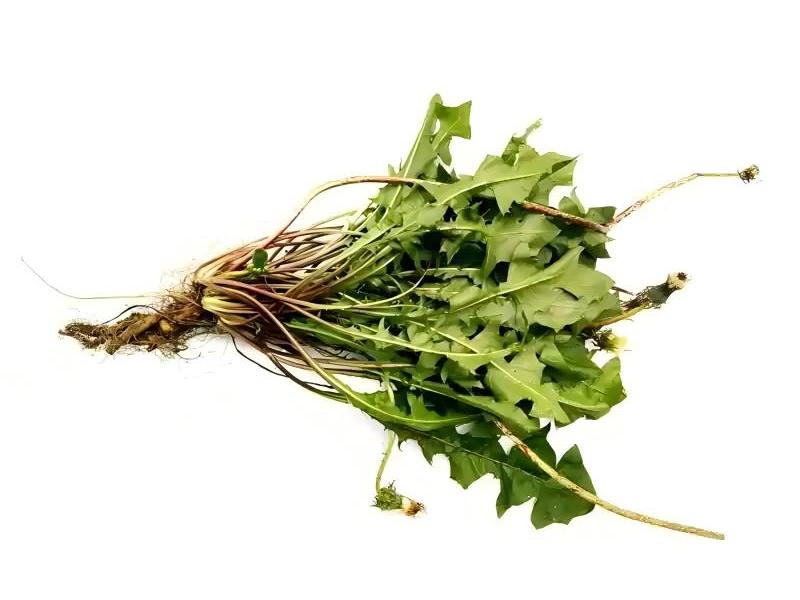
1タンポポ飲料の現在の開発
1.1タンポポの栄養価
Dandelion contains a variety of nutrients, such as carbohydrates, proteins, cellulose and a variety of mineral elements. According to an analysis [7], every 100 g of fresh dandelion contains 84 g of water, 11 g of carbohydrates, 3.6 g of protein, 3.1 g of ash, 2.1 g of crude fiber, 1.1 g of fat, 47 mg of vitamin C, 7.35 mg of carotene, 1.9 mg of niacin, vitamin B2 0.39 mg, vitamin B1 0.03 mg, potassium 325 mg, calcium 216 mg, phosphorus 115 mg, sodium 78 mg, magnesium 53 mg, iron 12.4 mg, manganese 0.57 mg, copper 0.45 mg, zinc 0.35 mg and selenium 14.7 μg, In addition, dandelion is rich in amino acids such as aspartic acid 1,073.2 mg, glycine 466.0 mg, alanine 502.0 mg, threonine 709.9 mg, serine 381.8 mg, glutamic acid 1,073.2 mg, leucine 40.2 mg, arginine 550.6 mg, proline 526.5 mg, tyrosine 325.6 mg, phenylalanine 498.4 mg, lysine 325.6 mg and histidine 180.9 mg, with a total of up to 8,143 mg/100 g of amino acids, significantly higher than wild counterparts.
1.2タンポポの有効性の分析
タンポポエキス タンポポの中で最も重要な物質の一つであり、広く植物全体で発見されている多糖類の活性物質が豊富です。現代の薬理学的研究によると、タンポポの多糖類には、抗炎症、抗菌、抗酸化、抗腫瘍、低血糖、免疫増強作用などの薬理作用がある。たとえばzhou yaniらは[8]、マウスにリンコマイシンを与えて潰瘍性大腸炎のモデルを確立することによって、腸内細菌症と併用された潰瘍性大腸炎のマウスモデルを確立した。対照実験を用いてタンポポ多糖類の腸内細菌叢に対する効果と潰瘍性大腸炎および腸内細菌症を有するマウスの抗炎症効果を研究する。タンポポ多糖類がマウスの炎症性サイトカインの分泌を減らし、腸内細菌叢の構造を調節することが分かった。
Xu Jin et al. [9] proved that dandelion polysaccharides have antioxidant capacity through dandelion polysaccharide reducing power experiments, DPPH scavenging capacity assays and superoxide anion scavenging capacity assays. Li Chunlan et al. [10] studied the hepatoprotective effect of dandelion polysaccharides by administering dandelion polysaccharides to mice with carbon tetrachloride liver damage. dandelion polysaccharides have a protective effect on mice with liver damage. Nie Wenjia et al. [11] found that dandelion polysaccharides have an inhibitory effect on Escherichia coli, Bacillus subtilis and Staphylococcus aureus when studying the active ingredients and pharmacological effects of dandelion. Liu Xiaoyan et al. [12] proved through a series of experiments that dandelion polysaccharides can significantly inhibit the proliferation, migration, invasion, etc.
Flavonoids are an important class of active substances in dandelion extract. Studies have shown that dandelion flavonoids also have anti-inflammatory, antibacterial, antioxidant, anti-tumor, and cardioprotective effects. Wang Chao et al. [13] studied the antioxidant protective effect and mechanism of dandelion flavonoids on chronic obstructive pulmonary disease caused by tobacco smoke in mice by feeding dandelion flavonoids to mice with chronic obstructive pulmonary disease caused by tobacco smoke, and using lung function-related indicators as the standard. The study proved that dandelion flavonoids have good antioxidant capacity; Luo Lili et al. [14] proved the antibacterial properties of dandelion flavonoids by perforation method and ultra-high performance liquid chromatography tandem mass spectrometry; Hou Jingling et al. [15] screened the anti-inflammatory components of dandelion by the dimethylbenzene-induced mouse ear swelling model, and then studied the anti-inflammatory effect of the anti-inflammatory ingredients through controlled experiments. The research experiments proved that dandelion flavonoids have a good inhibitory effect on inflammation, and that the anti-inflammatory effect of high concentrations of dandelion flavonoids is the best.
Dandelion extract powder also contains various active substances such as sterol compounds, terpenoids and phenolic acids. Many scholars have found that these substances have multiple functions, including anti-inflammatory, antibacterial, antioxidant, anti-tumor, hypoglycemic, diabetes relief, liver protection, gallbladder protection and anti-fatigue effects [16-23].
1.3タンポポ液体飲料の開発
China'の飲料市場は現在、茶や果物や野菜ジュース飲料が消費の割合を増加させており、活況を呈しています。これはpeople&の変革と密接に関連しています#39; s消費概念である。経済発展に伴い、people& 's living standards have gradually improved, and their consumption concepts have also changed from seeking cheap and affordable products to choosing healthier and more cost-effective products. The demand for beverages has also shifted from simply quenching thirst to health. Based on this concept, it is of practical significance to develop dandelion, which has multiple functions, into a beverage.
At present, many researchers have explored and studied the development of dandelion drinks. Xiang Feng [7] used dandelion and chrysanthemum as raw materials, and prepared a concentrated liquid by cleaning, crushing, and ultrasonic-assisted ethanol extraction. Single-factor experiments were carried out with citric acid, white sugar, and honey, respectively. On the basis of the single-factor experiments, a 3-factor (citric acid, white sugar, honey) 3-level orthogonal test, and the results were analyzed by the analysis of variance, and finally determined that the optimal formula for the dandelion and chrysanthemum compound beverage is 80% dandelion juice, 20% chrysanthemum juice, 4% sugar, 0.02% citric acid, and 2% honey.
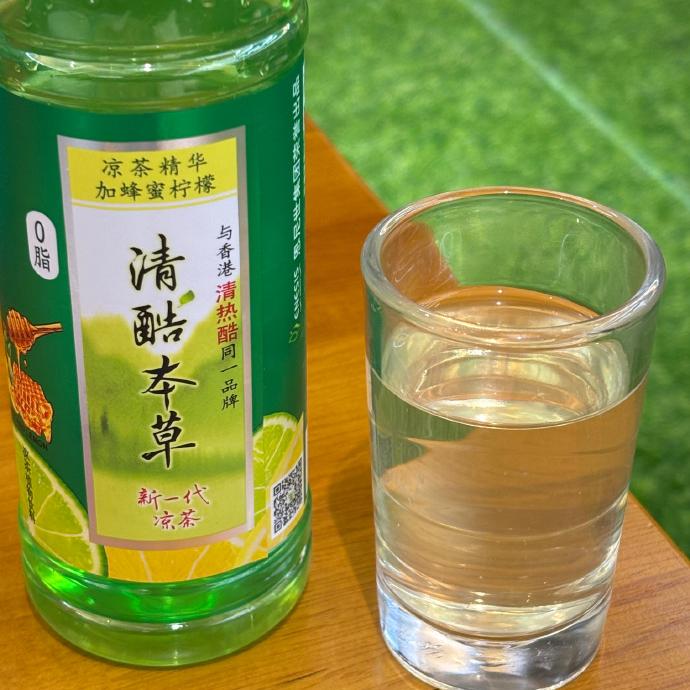
この配合飲料は、澄んだ色で適度な甘味と酸味があり、全体的に薄い黄色をしています。タンポポやキクの香りがするのも特徴です。xiong yaqinら[24]は発芽玄米、レイシ茸、タンポポを主成分とし、微生物発酵法で発芽玄米を発酵させたレイシ茸液を製造した。タンポポを洗浄し、乾燥させ、粉砕し、ふるいにかけ、60°cの水で抽出し、真空濾過し、濃縮し、真空凍結乾燥させ、粉末に粉砕した。最終的に、単因子実験と直交実験を用いて、レシシキノコ発酵液40%、タンポポ抽出液0.35%、キシリトール4%、クエン酸0.005%、安定剤0.3%(カルボキシメチルセルロースナトリウムとアルギン酸ナトリウムの比1:2)の最適な配合を決定した。得られた化合物飲料は、柔らかい味、適度な苦味、透明なコーヒー色の液体を有し、健康に良い効果を有する。
Sun Yang et al. [25] used dandelion and monk fruit as raw materials. They prepared the dandelion and monk fruit into a slurry by washing, microwaving, crushing and adding water, and added stabilizers (pectin 0.09%, xanthan gum 0.04%, sodium carboxymethyl cellulose 0.2%). Finally, through single factor experiments and orthogonal experiments, the optimal formula was determined to be dandelion pulp mixed with monk fruit liquid in a ratio of 7:3, liquid-to-material ratio (mixed stock solution: water) 1:60, sugar 20%, citric acid 0.5%. The dandelion-monk fruit compound beverage prepared using the above method has the best stability, clear color, no layering or precipitation, with a unique aroma of Luo Han Guo and the fresh scent of dandelion.
Ning Le et al. [26] used ultrasound to extract polysaccharides from dandelion. The optimal extraction conditions for dandelion polysaccharides were determined using single-factor experiments and response surface methods: a liquid-to-solid ratio of 1:30 (g:mL), three extractions for 38 minutes at a temperature of 55 °C. The optimal recipe is an extract of dandelion polysaccharides with a total volume of 60%, 4% xylitol, 2% β-cyclodextrin, and 0.6% citric acid. The drink prepared in this way has a neutral taste and the right amount of sweetness.
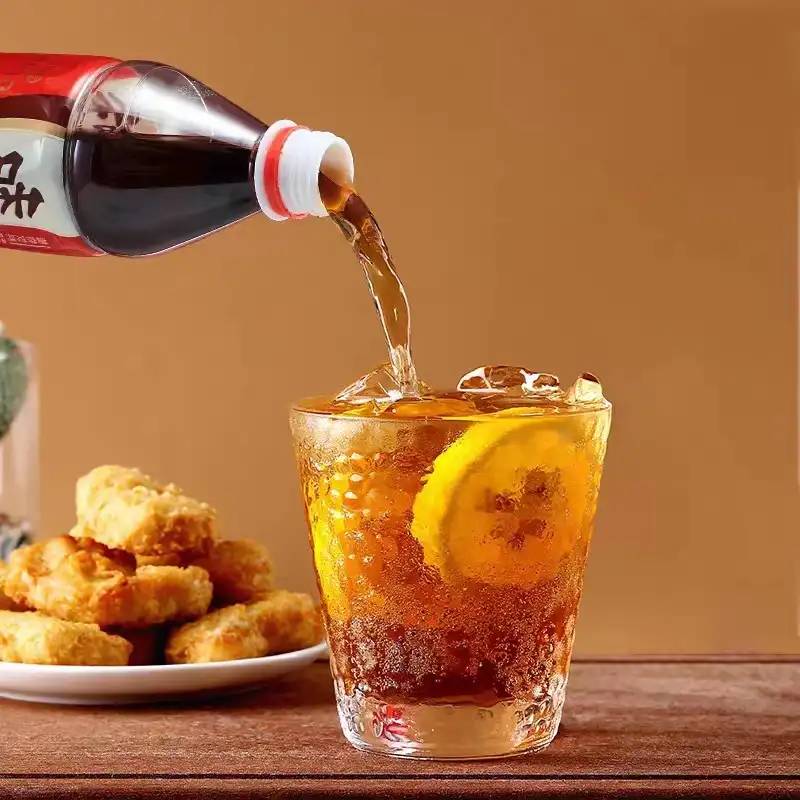
jia juanら[27]はタンポポやナツメヤシなどを使っているクコ抽出主成分として、混合ジュース調製を使用して単因子実験と直交実験を通じて最適な式を決定:15%タンポポ、12%赤ナツメ、7%クコ、7%ショ糖、0.01%クエン酸。完成した製品は半透明の色で、甘くて酸っぱい味がします。任玉玉ら[28]は、タンポポを殺して乾燥させ、湯を沸かしてタンポポ風味の飲料を抽出した。また、巧星ら。【29】昔、タンポポシルクのトウモロコシできた原料を蘇介はらた。【30】昔、柑橘系とタンポポの原料と李ウォルヨンら。【31】昔、タンポポを得んと燕麦が主原料し複合飲料風味も異なる一連の処理を加えた。上記の探索的研究は、飲料の種類を豊かにするだけでなく、タンポポ資源の開発のためのアイデアを開き、実用的な開発方法を提供します。
The polysaccharide content of dandelion root is significantly higher than that of the rest of the dandelion plant. Dandelion root basically contains all the compounds in the whole dandelion plant, and has corresponding pharmacological effects. Many researchers have explored the application of dandelion root in beverages. For example, Liu Shanshan et al. [32] used dandelion root enzymatic solution as the raw material, and determined the formula through single factor experiments and orthogonal experiments. The formula was determined to be diluting the dandelion root enzymatic solution 1:3.5, then adding 2% cotton sugar and 0.04% citric acid. Wu Haiting et al. [33] cleaned and crushed the dandelion root, and boiled with water at a ratio of 1:30 for 1.5 h to obtain the original solution. The formula was determined by orthogonal optimization experiments to be dandelion root extract 40%, white sugar 8%, citric acid 0.1%, and stabilizer 0.1%. The finished beverage is a clear orange-brown liquid with a sweet, refreshing aroma and a barley tea flavor.

[34]タンポポの根を洗浄し、乾燥させ、焙煎し、タンポポを用いた単因子実験と、タンポポのソバとカシアの種子を用いた単因子実験を行った。単因子実験に基づいて直交実験を行い、40%のタンポポ根粒子および25%のカシア種子としての配合を決定した。上記の方法で作られたティーバッグから淹れたお茶は、澄んだスープと柔らかな味わいが特徴です。zhang jingら[35]はタンポポの根から熱湯で多糖類を抽出し、単因子試験と直交試験を用いて各成分の最適な比率を決定した。最適な処方は、64%のタンポポ抽出物、3.04%のタンポポ多糖類、0.08%のクエン酸、およびであるステビア。この比率で作られる飲料は、鮮やかな色と独特の味を持つ。
1.4タンポポ固形ドリンクの開発
固形飲料は、砂糖、牛乳、乳製品、卵または卵製品、果汁または食用植物抽出物を主原料とし、適切な添加剤または添加物を加えた固形物である食品添加物。それは粉末、顆粒または塊に作られます。固形飲料は、液体飲料に比べて持ち運びや保管に便利です。固形飲料の観点からタンポポ資源の開発に関するいくつかの研究がありました。zhang jingchenら[36]黒参を粉砕し、ふるいにかけ、1:15の割合で1時間3回水に浸す。その後、それをろ過濃縮し、タンポポを洗浄し、90°cで1:10の割合で1 hの水に浸し、3回繰り返した後、ろ過濃縮し、凍結乾燥し、後で使用するために粉砕した。単因子実験と応答曲面実験を行った結果、14.8%の黒参エキス、9.9%のタンポポエキスが最適であることが分かった。isomalt 55.6%9.7%のマルトデキストリン上記の製法による固形飲料は、安定性が良く、見た目も美しく、程よい甘さと口当たりがある。
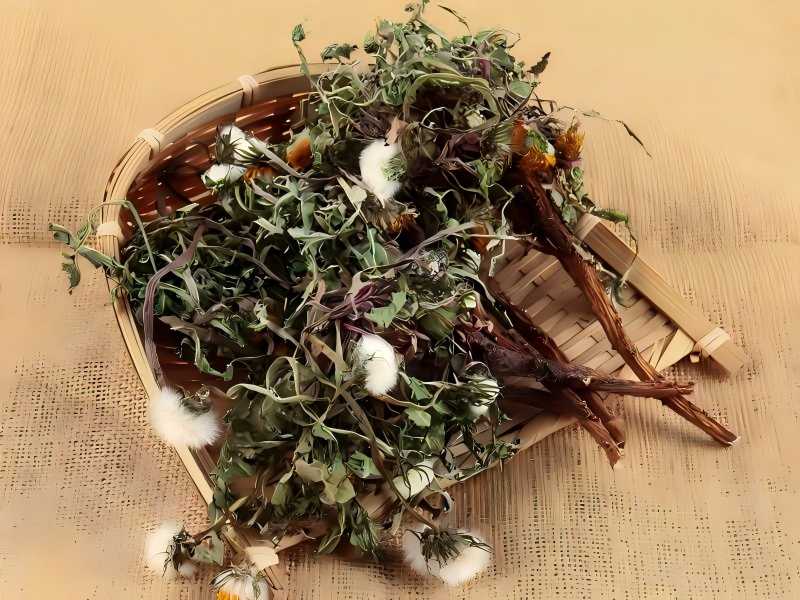
2結論
中国は資源が豊富な広大な国であり,特に植物資源が豊富である。タンポポは多様性が豊富で、環境に非常に適応性があり、土壌肥沃度の要件が非常に低い。中国に広く分布する。タンポポからの様々な飲み物の開発に関する研究は、タンポポ資源の開発のためのアイデアとインスピレーションを提供します。また、経済と人々の発展に伴い'の生活水準は一日一日を改善、people's consumption concepts and food concepts are gradually shifting towards nutrition and health, and the market share of healthy green foods and drinks is further expanding. Dandelion drink products that have been developed in China include dandelion-chrysanthemum, dandelion-lingzhi, dandelion-luohanguo, dandelion-red date-wolfberry and other compound drinks. In addition to research on liquid drink products, there has also been a small amount of research on solid drinks, opening up new ways to exploit dandelion resources in the beverage sector.
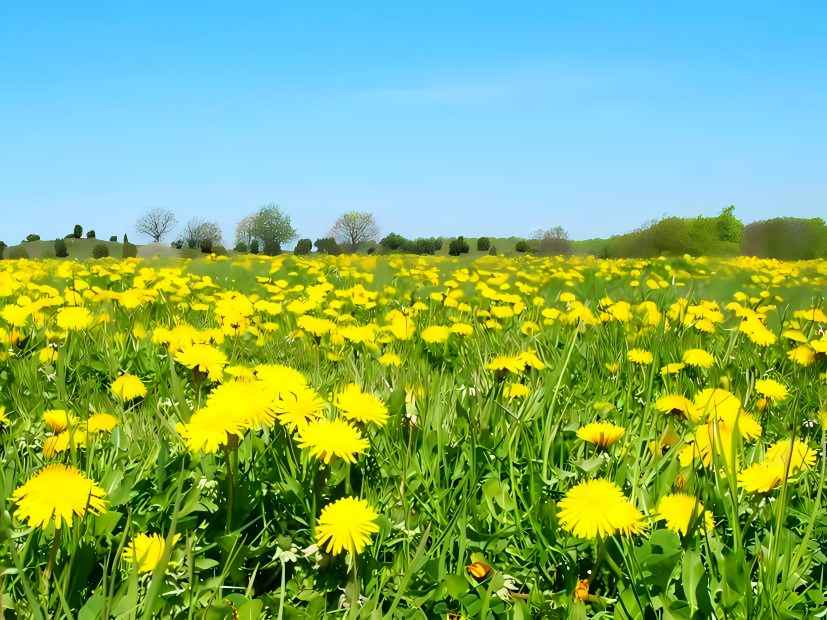
参照
[1]国立薬局方委員会。ピープルの薬局方'の中国共和国:パートi [m]。『中国科学技術史』中央公論社、2016年。
[2]尚Zhijun新改訂本草綱目[m]。『岩波書店』岩波書店、1981年。
[3] ren hanshu, zhu wenqing, zheng yuanyuan, et al。タンポポの機能成分と生理活性に関する研究[j]。^「food and drugs, 2022, 24(2): 2-5」。food and drugs . 2018年2月22日閲覧。
[4] MItEK M,マーチンですČAKOVA D LEGATH Jポリフェノールの内容や抗酸化作用、、cytotoxicity評価Taraxacum officinale抽出を通じて用意micelle-mediated抽出方法か[J]。分子、2019,24(6):1-14。
[5]ゾウセヨン。タンポポの生理活性物質に関する研究の進展[j]。黒竜江省農業科学,2019,302(8):186-189。
[6] meng ran, xue zhizhong, lu xuelin, et al。タンポポの有効成分と薬理作用に関する研究[j]。農業科学江蘇で、2021年まで49(9):36-43。
[7]翔f .タンポポからの有効成分の抽出と製品開発[d]。石川大学、2020年。
[8] zhou y, guo y, liu c, et al。潰瘍性大腸炎および植物相不均衡マウスを対象としたタンポポ多糖類の腸内フローラ調節および抗炎症作用に関する研究[j]。^ a b c d e f g h『医学と臨床』、2018年、4-4頁。
[9] xu j, pang q, sun j, et al。超音波細胞破壊およびin vitro抗酸化活性によるタンポポ葉多糖類抽出プロセスの最適化[j]。^ a b c d e『人事興信録』第2版、大正13年(1924年)、134 -139頁。
【10】李春蘭、趙亮。タンポポ多糖類の四塩化炭素誘発性肝障害に対する防御効果[j]。日本神経学会誌,2010,13(17):33-35。
【11】聶文嘉、徐帥、張永美。タンポポの有効成分と薬理作用に関する研究[j]。中国中医薬研究院紀要,2020,22(7):140-145。
[12] liu xiaoyan, long feng, zhao yu, et al。多糖类をタンポポの影響の遷移・朝鮮出兵などに基づいて乳ガン細胞をtriple-negative PI3K / Akt / GSK-3βか[J]経路があり^「natural product research and development, 2023, 35(7):1135-1143」(英語). natural product research and development . 2018年3月25日閲覧。
[13] wang chao, chen fang, hu kaishun, et al。タンポポの抗酸化保護作用とタバコ煙による慢性閉塞性肺疾患に対するフラボノイドの機構[j]。国際学術誌「ネイチャ・フォトニックス(呼んで3、薬、2023 44(3):257-264。
[14] luo lili, xue gumei, qi xiangfan, et al。タンポポ部位の抗菌作用と代謝物の違いに関するuplc-ms / ms解析[j]。^『官報』第2036号、大正12年(1923年)3月18日。
[15] hou jingling, zhou xiaonan, feng shasha, et al。タンポポ抽出物の抗炎症作用に関する研究[j]。中国獣医学会誌,2017,53(3):64-66。
[16] meng ran, xue zhizhong, lu xuelin, et al。タンポポの有効成分と薬理作用に関する研究[j]。江蘇農科、2021年まで、49(9):36-43。
[17] yin yifan, li hewei, tao tianxiu, et al。jak2 / stat3およびjnkシグナル経路を用いた急性重篤肝炎に対するタンポポステロールの保護効果に関する研究[j]。薬理学临床、中国の汉方薬2023 39(8):57-61。
[18]左明順、東志成、左羽ほか[18]左明順、東志成、左羽ほかタンポポの膀胱がんに対する潜在的なメカニズムの研究[j / ol]。chinese journal of experimental tcm formulae: 1-9[2023-06-08]。https://doi.org/10.13422/j.cnki.syfjx.20231124。
[19] ge b, wang z, zhou h et al。タンポポステロールの薬理作用に関する研究の進展[j]。^ a b c d e f g h i『動物の進化』、2010年、102-105頁。
[20] kang j, wang h .タンポポの抗炎症作用に関する研究[j]。2015年中国野生植物資源、34(1):37-39。
[21] pan mingyue, li tao, chen wanyu, et al。hplc法とネットワーク薬理学に基づくタンポポの抗酸化活性成分とメカニズムの研究[j]。吉林大学紀要(自然科学編),2023,61(2):437-442。
[22]宋でくれました。タンポポにおける抗菌成分の単離と同定[d]。^ a b c d e f g h『北欧史』、中央大学、2007年。
[23] lin jinyong, chen sibao。抗腫瘍活性とセスキテルペンラクトンのメカニズムに関する研究の進展[j]。^ a b c忠南薬局、2023年、21(6):1589-1598。
[24]熊亜琴、羅建光。発芽玄米、レイシキノコ、タンポポを原料とした複合飲料の開発[j]。2017年(平成29年)4月2日:5-9号線が開通。
[25] sun yang, wang tingting, wang shuling, et al。タンポポとモンクフルーツから作られた化合物飲料の安定性に関する研究[j]。中国の果物と野菜,2022,42(4):16-20。
[26] ning yue, zheng nan, cai jianyan, et al。タンポポ多糖類の抽出と飲料の開発[j]。穀物、油脂、2021、34(12):86-89。
[27] jia juan, ma chuanlan, li yapeng, et al。タンポポ、クコ、赤日付化合物健康飲料のプロセス開発[j]。中国の果物と野菜、2021、41(9):37-44。
[28] ren yuyu, ren yi, zhao bingbing, et al。低糖タンポポ飲料の開発[j]。人参研究、2021年まで、33(1):37-39。
【29】巧行、李双奇、李喜欣直交実験を用いたトウモロコシの絹とタンポポの複合飲料の式の最適化[j]。2020穀類、の油及び油脂、33(9):60-63。
[30] su j, zhang h, wang r .柑橘類とタンポポの健康飲料の加工技術に関する研究[j]。食品科学技術経済学,2020,45(1):115-118。
[31] li yueying, wang yuenan, cheng nana, et al。タンポポとオート麦乳配合健康飲料の製造過程に関する研究[j]。2018年(平成30年)4月1日:48 - 48系統を廃止。
[32]柳サンサン。コーヒーのようなタンポポ根製品の研究開発[d]。『河北農業大学』河北農業大学、2018年。
[33]呉海亭、張新元、崔燕燕。麦茶風味のタンポポ飲料の研究開発[j]。農産加工、2019(4):20-23。
[34] liu shanshan, liu yaqiong, lin haopeng, et al。タンポポ根の焙煎工程の最適化とコーヒー風味ティーバッグの開発[j]。2018年氏(39)は、組み合わせ食品研究開発(19日):86-92。
[35] zhang jing, wen nuan, liu yangyang, et al。タンポポ根多糖の抽出とタンポポ多糖飲料の開発[j]。2017年(平成29年)3月1日-1号機が完成。
[36] zhang jingchen, liu shiwei, liu shengnan, et al。応答曲面法黒人参とタンポポ根の混合固形飲料の式プロセスの最適化[j]。吉林大学医学院ジャーナル、2023年、44(4):260-264。
-
Prev
Exploring the Potential of Ivy Leaf Extract Hederagenin in Functional Food Formulations
-
次
動物栄養におけるタンポポ抽出物の使用は何ですか?


 英語
英語 フランス
フランス スペイン
スペイン ロシア
ロシア 韓国
韓国 日本
日本